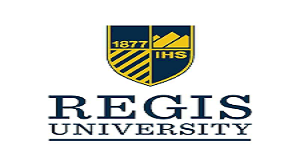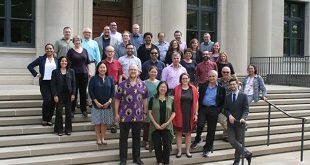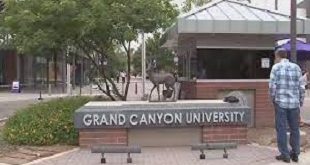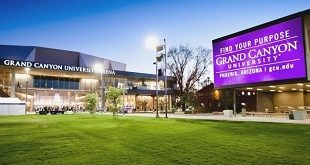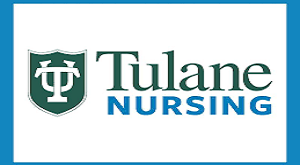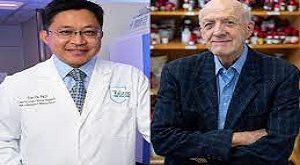About The University of Texas System
For almost 140 years, The College of Texas Framework has worked on the existences of Texans and individuals all around the world through training, exploration and medical services. With 13 organizations that enlist in excess of 243,000 understudies all in all, the UT Framework is one of the biggest state funded college frameworks in the US.UT organizations produce in excess of 64,000 alumni every year and grant more than 33% of college degrees in Texas and over 60% of the state’s physician certifications. On the whole, UT-possessed and partnered clinics and centers represent in excess of 10 million short term visits and multiple million emergency clinic days every year.
UT organizations are among the most creative on the planet, positioning No. 1 in Texas and negative. 2 in the country for government research consumptions. The UT Framework additionally is quite possibly of the biggest manager in Texas – utilizing in excess of 116,000 personnel, medical care experts, support staff and understudy laborers – and has a working spending plan of $25.2 billion for monetary year 2023.AUSTIN, Texas — Today The College of Texas Framework Leading group of Officials Director Kevin P. Eltife declared plans to send off a great medical care drive to speed up and grow UT Austin’s prospering clinical locale into a top notch scholastic clinical community for training, exploration and patient consideration. The College of Texas at Austin Clinical Center will begin with two new emergency clinic towers — The College of Texas MD Anderson Malignant growth Place and an UT Austin emergency clinic. MD Anderson, the country’s #1 malignant growth emergency clinic, will extend its Houston impression to Austin by building and working a new, far reaching disease focus, while UT Austin will fabricate and work its new specialty medical clinic.
“The foundation of The College of Texas at Austin Clinical Center, with UT MD Anderson Disease Center contiguous another College emergency clinic and admittance to UT Austin’s all’s schooling and examination resources, will without a doubt bring about groundbreaking malignant growth care, furnish understudies at the lead grounds with unparalleled encounters, and advantage patients all through the state and country forever,” said Eltife.Eltife noticed that the absolute speculation for these foundation activities of the new clinical focus is still in the conversation by the officials and is assessed at $2.5 billion. When endorsed, the clinics will be based on the ongoing site of UT Austin’s Erwin Center. The previous Longhorns ball field will be destroyed by fall 2024, and it is guessed that notable for the medical clinics ought to start in 2026.
Patients in Central Texas will have easier access to the world’s leading multidisciplinary, subspecialty-focused cancer care when the new UT MD Anderson hospital in Austin is fully staffed by MD Anderson physicians. UT Austin’s new college emergency clinic will be developed adjoining the MD Anderson site. UT Austin and UT MD Anderson as of now share solid cooperative connections that incorporate advancement research in disease recognition, finding, and treatment. That organization will actually want to fill essentially in the new clinical focus, utilizing the qualities of the two establishments, including the Dell Clinical School, to give a more elevated level of cooperation and space for them to lead research, teach clinical understudies and treat patients side by side in Austin. UT Austin and UT MD Anderson aggregately led $1.8 billion in research a year ago.
Lead representative Greg Abbott, who joined Eltife in making the declaration, alongside UT Framework Chancellor James B. Milliken, UT Austin President Jay Hartzell, UT MD Anderson President Peter Pisters and UT Austin Dell Clinical School Senior member Claudia F. Lucchinetti, said the new clinical focus will be perhaps of the main drive at any point embraced by a college framework to serve individuals of Texas.The Province of Texas has been determined to utilize advanced education to grow admittance to medical services, and today denotes a monster step towards accomplishing our objectives,” said Lead representative Abbott. ” UT MD Anderson Malignant growth Place is positioned No. 1 for disease care in America, with individuals across the world making a trip to Houston to get to mind. Yet rather than having Texans travel to MD Anderson in Houston, we will presently carry the world’s best treatment to them. Cancer patients’ families in Central Texas now have the option of staying close to home for that care. The way to building supportable networks is a medical care framework that can address the issues of a flourishing populace. UT Austin and MD Anderson will assist us with addressing those requirements. The Texas of tomorrow will be formed by what UT Austin and MD Anderson are working here today.”Milliken added, “The plans announced today will support an extraordinary expansion of the UT System’s education, health care, and research missions to serve Texas.” The UT System, one of the largest comprehensive university systems in the country, has provided numerous opportunities for collaboration among our institutions. The most recent one will include a partnership between UT Austin and UT MD Anderson that is a remarkable example of how this kind of synergy can have a significant and positive impact on the lives of Texans.”
University of Texas System Bets Big on Microcredentials
The framework, with around 250,000 understudies, has collaborated with microcredential supplier Coursera in its biggest association yet, which will get understudies credentialed by tech monsters including Meta, IBM and Google.As the maxim goes, everything is greater in Texas. Furthermore, presently going enormous applies to microcredentials.
The College of Texas Framework, traversing nine scholastic grounds with around 240,000 understudies, is extending its association with microcredential supplier Coursera. The drive declared last month is Coursera’s biggest, intending to arrive at 30,000 understudies with no less than one course by 2025.Microcredentials are little, buildable credits that assist understudies with procuring confirmations popular abilities like network safety. They’re not new — the State College of New York has had a sweeping project beginning around 2018, and Spelman School as of late stood out as truly newsworthy for gathering almost $2 million in income with its own endorsement programming.
UT’s organization with Coursera, which works with colleges giving web-based courses and testaments, started in December 2022. An experimental run program included 3,000 understudies, who finished in excess of 6,000 tasks.”They’re casting a ballot with their enlistment, most importantly — it’s a great indication of interest with the primary semester alone,” UT framework chancellor James B. Milliken said. “All that I hear from understudies, from bosses and others is they invite this as an extra asset to set them up for the commercial center.”
UT Doubles Down
The writing computer programs is essential for Texas Accreditations for the Future, a drive inside the College of Texas Framework and the state. It began as a team with a Strada Schooling Establishment award, which subsidizes the implanting of microcredentials in college degrees through 2025.Businesses are saying, ‘We really want individuals with better abilities,’ and colleges are saying, ‘We have them,’ and they communicate in various dialects,” said Kelvin Bentley, program director for the drive. “With microcredentials, it’s a piece of a continuous discussion to escape storehouses and return to the table to sort out how best to plan understudies for the universe of work.”
Bentley’s definitive objective with the award is to have 30,000 understudies go through the program — whether it’s one course or acquiring a whole microcredential — by 2025. Bentley said the award has serious areas of strength for an on value, with a point of having 22,000 of the members be understudies of variety. There are additionally plans to incorporate alumni understudies and graduated class.The progress of the microcredential experimental run program at UT prompted a $2 million speculation from the College of Texas officials in July and the development with Coursera in August. Google likewise joined the organization, giving 500 licenses to understudies to get to a Google profession declaration.
The testaments are about four to a half year of work, separating to three to six hours every week. The 35 microcredentials are generally tech-centered. The subjects of the declarations incorporate advanced promoting action from Google, network safety from IBM, web-based entertainment showcasing from Meta and accounting from Intuit.
Scott Shireman, worldwide head of Coursera for Grounds, said the emphasis on innovation is expected to some degree to the enormous interest for tech workers. Coursera likewise is hoping to differentiate its contributions, remembering a concentration for the medical care industry.Coursera was established in 2012 as a stage for huge open web-based courses — otherwise called MOOCs. It at last turned, cooperating with government and colleges, and sent off its microcredential program in 2022.
Courses can act as independent declarations or consider a credit toward getting a four-year degree. UT Dallas’ business college, for instance, is offering bonus recognition in courses on the off chance that a testament in abilities like IT the executives is likewise finished.Coursera’s Shireman and College of Texas authorities underlined that this association wouldn’t supplant degree programs and is intended to supplement customary contributions.”What UT is doing is making it some portion of its schooling; it’s not either,” said Jim Fong, boss exploration official at the College Proficient and Proceeding with Training Affiliation. “The entire more modest modules of learning can squeeze into a degree. They’re attempting to make things stackable. Assuming that people participate and work together, the big picture approach works out and the two players can win.”
The Next Phase in Education?
Microcredentials’ mass reception has been slow, however the Coronavirus pandemic, alongside an approaching enlistment bluff and blurring trust in advanced education, have prodded establishments to investigate arrangements.”The world will in general change gradually, then, at that point, at the same time; [institutions] are attempting to ensure they’re not caught unaware,” said Frederick Hess, overseer of schooling strategy learns at the moderate research organization the American Undertaking Foundation. “They’re mindful and take a gander at worries of declining enlistment and on the off chance that schools are worth the effort — microcredentials are a possible response to this.”
Furthermore, working environments are advancing, as well, even as they censure foundations for producing graduates who neglect to address their issues.”I consider one the greatest patterns in advanced education throughout recent years is the researches, the Metas of the world reaching out, saying, ‘There’s a hole in the labor force; we will help,'” Shireman said. “It’s made this second in the U.S.”
There is a lot to consider while looking toward a significant rollout for testament programs. Hess said there should be a method for policing microcredentials for quality, guarantee dominance of abilities and sort out the most effective way to track and stack identifications.”The hardest part is the way to sort out somebody finished the tasks and report that they have these abilities,” Hess said. “This is tending to genuine worries, however for that to occur, you need to sort out the systems of thinking of intelligent procedures.”Yet, Fong encouraged conventional organizations to incline toward advancement, as practical choices have sprung up over the most recent couple of many years.
“They need to enhance incomes somewhere else with customary understudies,” Fong said. “To grant them endorsements en route, for my purposes, it simply appears to be exceptionally useful. It’s fundamental for higher ed to take a gander at development, since they’ve placed their eggs into one container and safeguarded it well, however they’re at this point not in that frame of mind to guard it if they have any desire to get by or flourish from now on.”
